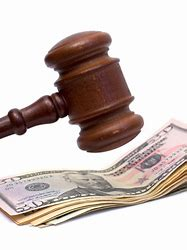It’s that time of year again when, as a business owner, you have to start thinking about 1099ing folks. There’s a lot to it but we’re going to think about it with you.
REINFORCING THE BASICS.
What is a Form 1099 again? It is a calendar-year information return that reports miscellaneous payments to non-employee individuals. Information returns are meant to encourage people to report all their income or in the words of the IRS, “to increase voluntary compliance and improve collections.” That must be a lot of reportable income going on because there are 20 information returns in 2018. Even though there are 20 of them, we’re just going to talk about the big one you most likely will be giving or getting, FORM 1099-MISC. But first things first.
What should I do first? Why the W-9, of course! Check out our blog from two weeks ago: https://carolmcatee.com/2018/11/14/ask-and-you-bett…w-about-form-w-9/
FORM 1099-MISC.
Did your business pay, by cash/check, anyone to do anything this year? If so, get ready to hammer out Form 1099-MISC, Miscellaneous Income. If you paid royalties to any individual, any rents to an individual, or paid a non-employee or independent contractor or unincorporated business for services, an amount totaling $600 or more, you may have to issue (to recipient) and file (with government) Form 1099-MISC.
1099-MISC BY THE BOXES.
Box 1. Rents. Of $600 or more from real estate, equipment leases/rents, and coin-operated amusements.
Box 2. Royalties. Of $10 or more from oil, gas, and mineral properties AND the intangible stuff like patents, copyrights, trademarks, etc.
Box 3. Other income. Last but not least.
Box 4. Federal income tax withheld. This is where backup federal income tax withholding goes if the payee/recipient doesn’t have a correct TIN. For a bit more info check out our blog from two weeks ago: https://carolmcatee.com/2018/11/14/ask-and-you-bett…w-about-form-w-9/
Box 5. Fishing boat proceeds. Basically, do not report wages that should go on a W-2. This box is for when catches are sold for a boat load of money that is then distributed to fishermen of a crew less than 10. There is also a requirement for per trip cash payments of up to $100 for additional duties like cook and first mate.
Box 6. Medical and health care payments. Of $600 or more to suppliers or providers of medical or health care services and including payments made by insurers under health, accident, and sickness/disability programs. This also includes payments to animal doctors (veterinarians) as well, if you are in the business of breeding, racing, and farming for example. Corporations count here; nonprofits don’t. Prescription payments to pharmacies are not counted.
Box 7. Non-employee compensation. Some of the stuff, $600 or more, that goes here is attorney fees, payments to board members and directors, professional fess for accountants, architects, engineers and so on, fees that one professional pays to another professional, fees paid to legal experts and witnesses, unrepaid commissions to salespersons, and fees/travel reimbursements that were unaccounted for by the payee. Generally, ALL income subject to self-employment tax (Social Security and Medicare) in addition to income tax.
Box 8. Substitute payments in lieu of dividends or interest.
Box 9. Payer made direct sales of $5,000 or more of consumer products to buyer (recipient) for resale.
Box 10. Crop insurance proceeds. Of $600 or more received by farmers from insurance companies, unless there was capitalization of certain expenses.
Box 13. Excess golden parachute payments. If a big whig executive gets the boot and has one heck of a compensation agreement, anything over the average annual salary for the preceding 5 years is excess and goes here.
Box 14. Gross proceeds paid to an attorney. Of $600 or more and primarily for insurance companies who pay settlements to law firms.
Box 3. Other income. We put this last because this is the catch-all box for $600 or more that doesn’t fit in any of the other boxes. Generally, ANY AND ALL income NOT subject to self-employment tax. When you get a prize or an award for something other than services. So, your winnings on Jeopardy or Ellen’s 12 Days of Giveaways.  Or a prize or award recognizing past (religious, charitable, artistic, scientific, educational, literary or civic) accomplishments. Or when you win stuff without betting, for example, in a sweepstakes or a raffle. If it’s stuff; the amount 1099’d is the fair market value of the item. If an employee dies and the last owed amounts/paychecks are paid after the year of death, the amount goes here. Most punitive damages and damages for nonphysical injuries or sickness are taxable and reportable in box 3. Here’s a fun one: medical research payments, when you participate in clinical trials for everything from dream studies to ulcers.
Or a prize or award recognizing past (religious, charitable, artistic, scientific, educational, literary or civic) accomplishments. Or when you win stuff without betting, for example, in a sweepstakes or a raffle. If it’s stuff; the amount 1099’d is the fair market value of the item. If an employee dies and the last owed amounts/paychecks are paid after the year of death, the amount goes here. Most punitive damages and damages for nonphysical injuries or sickness are taxable and reportable in box 3. Here’s a fun one: medical research payments, when you participate in clinical trials for everything from dream studies to ulcers.
WHAT DOES NOT GET 1099’d-MISC?
1. Employee business expense reimbursements. If the reimbursements are under a nonaccountable plan, these are W-2 wages. Accountable plan reimbursements are not W-2 wages EXCEPT FOR some per diem and mileage allowances.
2. Prizes, bonuses, awards paid to employees.
3. Payments for goods, merchandise, or payments by credit card.
4. Corporate entities, both C and S BUT with this exception: You should issue and file, Form 1099-MISC for ALL attorney’s fees, ALL gross proceeds paid to an attorney, and ALL payments to for-profit medical care providers regardless of their business type.
WHERE DO THE 1099S GO AND WHEN DO THEY HAVE TO GET THERE BY?
To recipients. January 31st, except for Boxes 8 and 14 which are due February 15th.
To IRS. February 28th, except for Box 7 which is due January 31st, whether paper or e-filed.
AND WHAT IF I DON’T ISSUE OR FILE?
Punishment by monetary penalty. Your annual strategy should always be to file the information returns, in this case the Form 1099-MISC and accompanying Form-1096, correctly and timely. Penalties may apply when you as the payer:
⇒ Report an incorrect TIN;
⇒ Don’t report a TIN;
⇒ Don’t file paper forms that are machine readable;
⇒ File paper returns when you should have e-filed; and,
⇒ Don’t file correct returns by the due date and without reasonable cause.
Penalties are per return/each individual 1099-MISC and assessed based upon filing date. Penalties for 2018 are:
Not more than 30 days late: $50 per return/$187,500 maximum;
31 days late through-August 1: $100 per return/$536,000 maximum;
After August 1 OR Not at all: $260 per return/$1,072,500 maximum; and,
Plain old, flat out intentional disregard: $530 per return/$ No maximum.
WHAT ELSE SHOULD I KNOW?
⇒ File a 1099-MISC for $600 or more paid, in the course of trade/business, to partnerships.
⇒ Summed up: payments to a non-employee go somewhere on a 1099-MISC.
⇒ It appears that the IRS stepped up penalty enforcement in 2017 and the enforcement will continue.
⇒ (Shameless plug!) If you receive “you’ve been bad” correspondence from the IRS about owing some penalties we are pretty good at identifying or articulating reasonable cause.
If you have some completed W-9s and amounts paid to 1099 vendors in 2018: get both to us by mail, email, or drop it all off and say hi; we’d be more than happy to assist you in the preparation and filing of any 1099s.
[email protected] OR 727-327-1999.
Check back here next week when we talk about who knows what. If there is anything you would like to know more about, leave a comment and we’ll blog it. And be sure to like us on Facebook and follow us on Twitter; for whatever it is we’ll be posting.
ANY TAX ADVICE IN THIS COMMUNICATION IS NOT INTENDED OR WRITTEN TO BE USED, AND CANNOT BE USED, BY A CLIENT OR ANY OTHER PERSON OR ENTITY FOR THE PURPOSE OF (i) AVOIDING PENALTIES THAT MAY BE IMPOSED ON ANY TAXPAYER OR (ii) PROMOTING, MARKETING OR RECOMMENDING TO ANOTHER PARTY ANY MATTERS ADDRESSED HEREIN.
